When it comes to launching people who are already ridiculously strong into a higher stratosphere of performance, Louie Simmons is the master. And his masterpiece is the Conjugate Training Method—also commonly referred to as the Westside Barbell Method or just "Westside." No matter what you call it, it's the benchmark for everyone in the business of making people strong.
Simmons's style of training ties together ideas from scholars, athletes, and coaches from the former Soviet Union and Bulgaria, as well as years of training himself and others.
The details grow and change over time, but the principles are rock-solid and have been borne out by the success of dozens of powerlifting champions and pro athletes ranging from NFL teams to UFC elites like Matt "The Immortal" Brown.
So do you need to head all the way to Westside Barbell in Columbus, Ohio, to get anything of value from this system? Sorry, but unless you've been invited, you'd make it no farther than the door. And even then, you might discover yourself to be one of those lifters so terrified upon setting foot in Westside that they promptly turn around, get back in their car, and flee.
To drill deep into the reservoir of strength hiding inside you, begin with these 10 rules of strength training from the man himself. Take them to heart, and come back when you're serious.
Lesson 1 Find Home Base
Dorothy from "The Wizard of Oz" may have had what it took to off a couple of wicked witches, but she'd need more help than the Tin Man, Scarecrow and Cowardly Lion could provide to last through a workout at Westside. Still, Simmons and Dorothy agree on one thing: There's no place like home.
If strength is your highest priority, make your home wherever you train. Simmons believes that you need to feel both comfortable and challenged in your training temple.
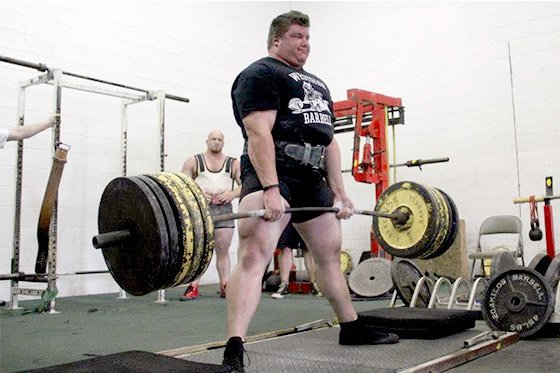
"You need to be in a gym where people are about at your level, but where you've got guys who know more and can lift more than you," he says. "If your goal is to become better, though, you have to know when it's time to move on to a better gym with stronger people training there."
Choose a training space that fits you and your training goals. When you've outgrown it, find a new home. Feel comfortable—but not too comfortable.
Lesson 2 Use The Buddy System
If you lift weights, you've probably been in the position of spotting someone or having someone spot you. If you haven't had that experience, then you've never pushed yourself beyond your comfort zone. Change that right away!
After working with a variety of spotters, you'll find that some people can truly help you pull off previously unthinkable lifts, while others don't know jack or don't know when to shut up. You need your training partners to fall into the former category if you want to grow.

"Every squat at Westside is a coached squat," says Simmons. "Everyone has some type of little problem with their lifts and technique, so there's always something to work on for everybody." This doesn't just apply to competition lifts, either. It is just as important in accessory lifts and everything else that contributes to the overall project of getting stronger.
Find a knowledgeable, dedicated partner you can depend on, and become someone they can depend on too. Be there to help troubleshoot when necessary, and accept their coaching in return.
Lesson 3 Set The Scene
If YouTube is your only window into the world of serious strength training, you might think that a background of grinding screamo metal is the only way to make a PR a reality.
That's not the only way to be hardcore, though. Your music needs to match your personality, your mood, and your objective for your training session.
"If you're a crazy person, you have to go crazy in the gym," Simmons says. "If you're not a crazy person, I want you calm. When you're training, music is very important for matching who you are as a person to what you're trying to achieve."
For Simmons, hardcore rap is the music that brings big lifts to life. Yours might be metal, techno, classical, film soundtracks, or "Danny's Song," by Loggins and Messina. Whatever it is, find it, press play, and make it work for you.
Lesson 4 Max Out Regularly
The Westside Barbell method is demanding, but it produces big results. Over 140 broken powerlifting records don't lie.
One aspect of the method that you can directly apply to your training is to find new heights of strength every week. At Westside, the athletes max out in variations of the bench, squat, and deadlift every week of every month, year after year.
Sound impossible? It's not.
"The entire gym breaks a record every training session with a 95 percent success rate," says Simmons, who has a statistician track max lifts at Westside Barbell.
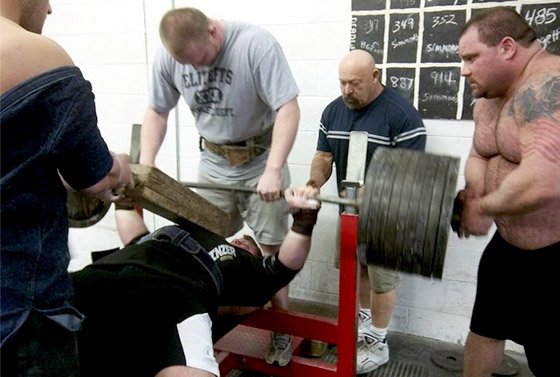
There's deep thinking behind the set-and-rep schemes Simmons uses to help his athletes hit these numbers. But the basic idea is that Westside athletes split lifting heavy in the major lifts between Monday and Wednesday, and work up to a new max on those days. When they hit the max, they're done with that lift for the week.
The takeaway for you? When you're training to be strong in a certain lift, you need to know where you stand, and test yourself regularly. "If you can max out on something every time you do these lifts, you'd be strong, too," Simmons promises.
Lesson 5 Aim For Small Gains
It's easy to understand that a journey of a thousand miles begins with one step, as the Chinese proverb goes. It's after the first few miles that the goal may start to seem unreachable. But the way forward hasn't changed. Only your point of view has.
What does this mean if your goal is a double-bodyweight deadlift or adding 100 pounds to your bench? Both goals can seem distant, but the way to get there is one pound at a time.
For Westside athletes to continually hit new max lifts and progress towards bigger goals, they take the one-step approach with tiny increments of improvement. That might mean adding another 2.5 pounds to a certain squat or deadlift variation. It's this type of incremental progress that eventually adds up to truly gargantuan totals.
"Think about it this way: If you break a max by 5 pounds a month, that's 60 pounds a year. If you keep doing that, you're going to be a bad dude," says Simmons.
Stay focused, stay strong, stay patient. You'll get there.
Lesson 6 Expand Your Idea Of A PR
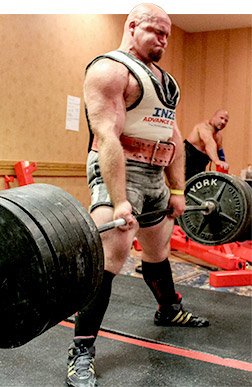
To say that Westside lifters set PRs every week can be a bit misleading. In truth, these beasts aren't upping their numbers in competition lifts like clockwork.
Instead, they set PRs in an immense variety of the classic lifts using different widths, types of variable resistance, and ranges of motion. A rack pull PR from a certain height is still a PR. So is a close-stance box squat PR to a specific box height. In fact, some Westside lifters will only test the big three where it counts—in a meet.
To build strength from the ground up, Simmons tweaks every possible variable in the Westside training program. He varies heavy days with low reps and high volume days with lighter reps.
He switches between primary lifts and accessory lifts. He mixes up the grips his athletes use, as well as the bars, bands, chains, boxes—everything.
The lesson for you? Take good records, so you know what your standards are in everything you do. And then push those standards. Only by giving your body new stimulation can you expect it to deliver new results.
Lesson 7 Crush Your Personal Weaknesses
Is there a body part you hate training so much that you go light when it comes time to hit it? Do you only think about the muscles you can see when you're staring in a mirror doing your best Ronnie Coleman imitation? Does the prospect of a heavy leg day make you start planning for a skip day?
If so, it's time to grow the hell up. The strong get that way by targeting weakness, not by playing to their strengths. At Westside, on days when athletes aren't pushing for a max, they're banging out reps of accessory lifts and band work that can stretch into the hundreds. But this work has just as much purpose and vision behind it as a max-effort pull.

"We may do as many as 100 consecutive tri pushdowns or 200 leg curls," says Simmons. Moving big iron plays a huge role in the Conjugate Training Method, but so does hammering every area of the body that plays a supporting role in major lifts. "Eighty percent of our training is high-rep, lighter-weight exercises that target small areas," he explains.
You may be strong somewhere, but you're not strong everywhere. Figure out the chinks in your armor and work on sealing them, rather than simply chasing pumps and trying to add a half-inch to your calves. Use high reps and lighter weight targeting stabilizer muscles with accessory lifts, and you'll see extra inches and pounds where it counts.
Lesson 8 Approach Strength From All Angles
When you first get into a gym and start lifting weights regularly, you can make exponential advances without much planning. Strength and size seem to come easily, even if you do the same thing for weeks or months at a time. But soon enough, those gains slow down. Then they stop. This is a sign that your program isn't complete enough to carry you any further.
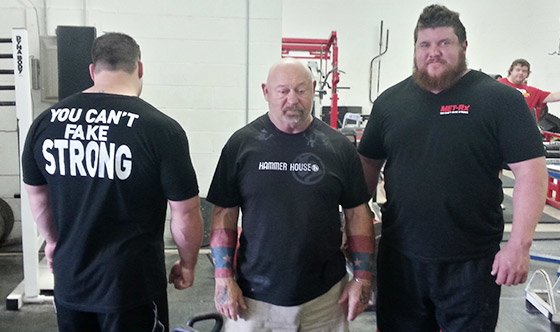
"If you turn your car left all the time, some parts will be worn out and some won't be touched," Simmons says. "Your body is the same way." Westside weaves together max-effort work, speed work, band work, and hypertrophy training into a seamless whole, creating athletes who can draw strength from a variety of sources when they need it.
Are you only turning left? Look at where your program is deficient, correct it, and get pointed in the right direction.
Lesson 9 Restore Yourself
The Conjugate Training Method pushes the most dedicated strength athletes in the world to their limits, which is why training at Westside Barbell is reserved for a select few. To sustain the level of training that goes down in Columbus, Simmons prescribes a broad array of recovery techniques.
"To get strong you have to have restoration," he says. "I'm working on a 400-page book right now, and 40 pages of it is dedicated to restoration." The most accessible recovery tool Westside uses is the foam roller for self-myofascial release. Simmons doesn't believe in foam rolling before workouts, but he likes it afterward as a recovery aid, along with massage, cryotherapy, acupuncture, and other tried-and-true methods.
If you have access to these techniques, use them. If you're wondering where the money comes from, start by cutting out alcohol and junk food for a few months. You'll find it quickly enough! But if nothing else, acquire a foam roller and learn how to use it. Expand your idea of what "rest" means, and your body will be ready to expand your idea of what "strength" means.
Lesson 10 Rest When You Need It, Work When You Don't
One thing you won't find a lot of in the Westside Barbell system is days off. Simmons believes athletes benefit from frequent, intense, and varied training. In general, he doesn't prescribe days off, since he doesn't believe that writing down rest days on a calendar is the best way to get quality time for recovery.
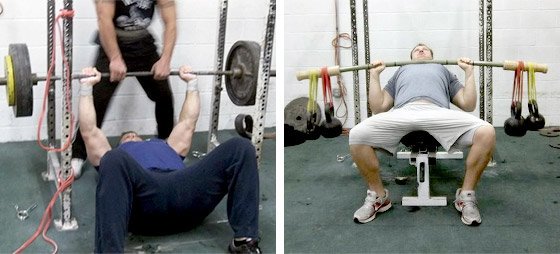
"Rest doesn't come on any specific week or day. When you feel it, it comes," he says. "You need to keep your baseline strength level high and never take too much time off. You have to be strong to be trainable. You want to be at 90 percent strength or higher at all times. You don't want to be at 80 percent strength and then have to work yourself to death to get back to the place where you can start to really train and get stronger again."
It's an approach that flies in the face of many conventional lifting splits, but Simmons doesn't believe in doing what's popular. He believes in doing what it takes to get people strong, and he has demonstrated that it works. To get strong, stay strong.

Recommended For You
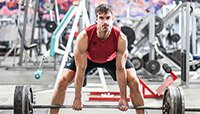
7 Ways To Maximize Your Strength And Speed
Strength and speed are both essential, but the real key to performance lies in combining the two. Learn the 7 principles of power.
18 Quick Ways To Improve Your Workouts
Sometimes wholesale program changes can do more harm than good. Instead, insert these 18 tip and twists to improve your current program and continue your physical progress.

